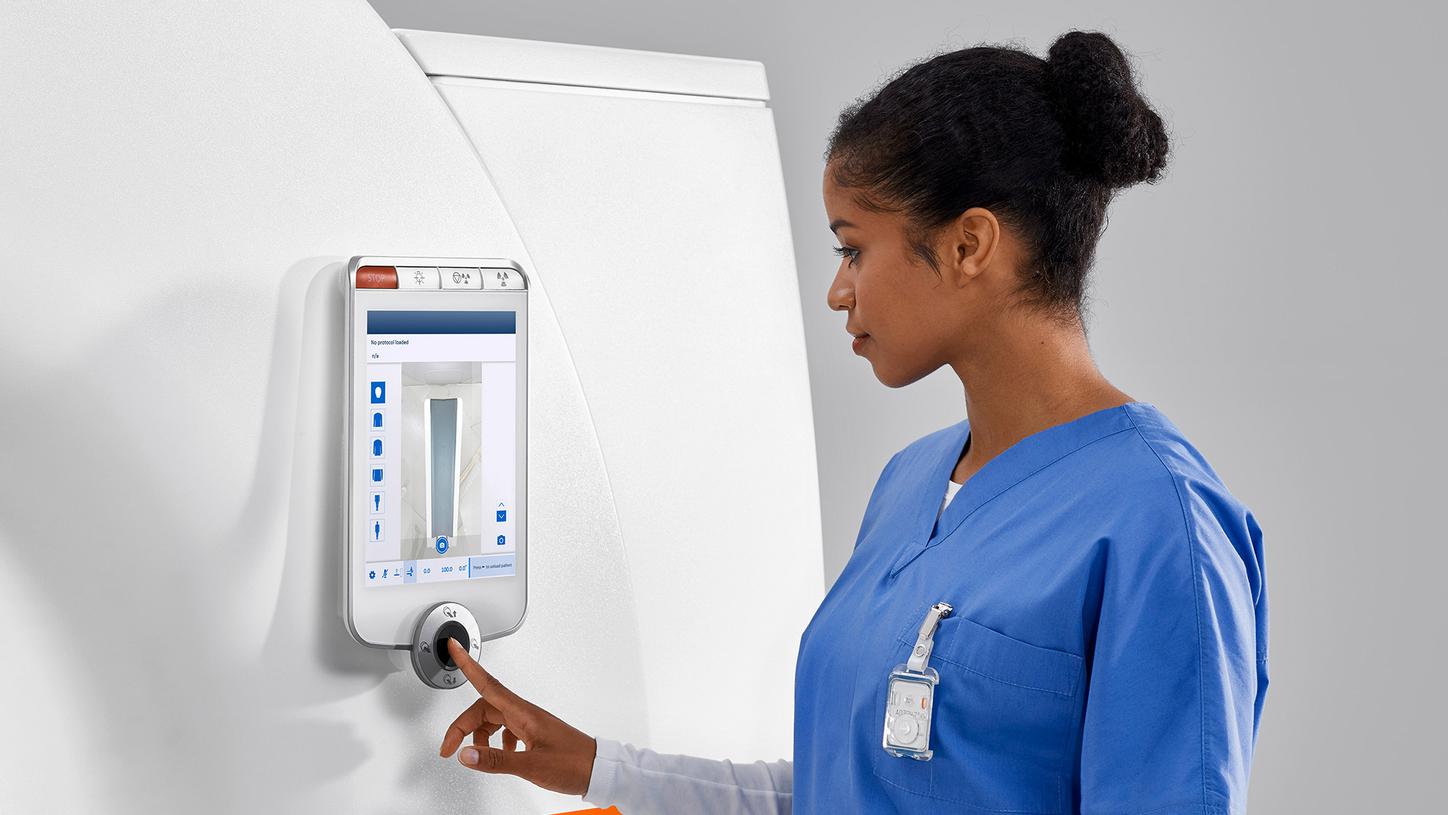Can you outperform AI within the FAST Integrated Workflow?
Test your abilities by selecting proper orientation, scan range, and consistent isocenter positioning in the skills challenge below. You will be scored-based on accuracy and the time it takes you to complete the challenge. Time will not be tracked between cases but when a patient is on the table… time is ticking. Share your results with your peers and send the challenge to them.
Why precise patient positioning is a challenge
Many factors in today’s medical landscape make the precise positioning of a patient in a CT a challenge for you as technician or radiologist. First of all, there are the patients, who you can’t choose. They differ significantly in size, height, and weight, so manual positioning is a job in itself, and it takes time. But technicians differ as well, various workflows and different body heights can lead to unreproducible positioning. In fact, the mean deviation from the isocenter is 2.6 cm in 95 percent of cases1. In effect, this leads to increased dose and affects image quality, and it can potentially lead to nonreimbursed rescans.
“ Special attention must be paid to correct patient positioning in order to optimize organ dose and image quality for each CT examination.”
Discover our FAST Integrated Workflow
Four easy steps drive workflow automation and standardization to a new level
Step 1. Starting with 3D measurement

To help you precisely position your patients, we’ve invented the FAST Integrated Workflow. FAST stands for "Fully Assisting Scanner Technologies". It all starts with 3D measurement on SOMATOM Force, SOMATOM Drive or SOMATOM Edge Plus.
- The FAST 3D Camera captures the patient’s shape, positioning, and height in three dimensions
- Using infrared measurement, it even recognizes body contour, which is especially useful when, for example, patients are wearing thick clothes
Step 2. Calculating with accuracy

Now at the push of a button you can leverage the power of automation for accurate and reproducible positioning. The new “zero-click” solution on the Touch Panels runs three unique algorithms simultaneously to support accurate and reproducible positioning:
- The body regions in z-direction
- The patient’s direction – “head-first versus feet-first” as well as “prone or supine”
- The table height and patient thickness
��
Step 3. Automating precision at the touch of a button

Specialized applications support accurate and reproducible positioning:
- FAST Isocentering: provides the correct isocenter position, enabling the right dose modulation and consistent images
- FAST Range: supports scanning the correct body region with no truncation by aligning the automatically identified anatomical position with the protocol
- FAST Direction: helps safeguard the right scan direction, which is crucial when moving the table with infused patients
Advanced Applications support an even higher throughput and better dose consistency:
- FAST Topo: enables faster scan speeds in topograms, which prevents breath-hold artifacts: it also has the potential to decrease the topogram dose
- FAST Planning: adapts the scan range to your patient’s anatomy, reducing overscanning and increasing consistency – regardless of who’s operating the system
- FAST 3D Align: adapts the reconstruction range to your patient’s anatomy
Step 4. Stay in control and close to your patients
Enhance patient experience and interaction with two front-side and two optional back-side Touch Panels:
- This allows all parameters to be set and controlled while staying in touch with the patient
- Protocol selection and patient positioning become simpler and more precise
- With FAST ECG Check, patient variabilities with ECG impedance and electrode contact are ruled out, allowing for the most accurate ECG signal for each patient